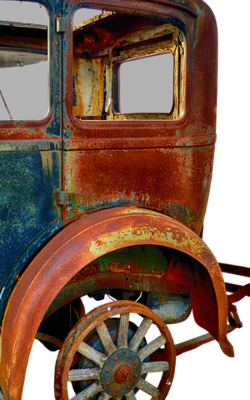Jornada Mela
Jornada Mela


Odisha is a land of pilgrims and devotional rituals. Though Lord Jagannath is accepted as the heart and soul of Odisha people and the symbol of Odia bhaktee marga [the path of devotion] there are different paths of devotion and belief existing in Odisha and accepted by a number of segments and huge followers to its credit. Odisha accepted different devotional heritage and be the root of different cultures and DHARMAs. Continuing the track, MAHIMA DHARMA, one of the oldest religions and philosophies is initiated from this holy land of Odisha and spread over India as well as in some parts of the globe with the same honor and spirit it has in its root. On the other hand, MAGHA-MELA on the day of AGIRA PURNIMA alias JORANDA-MELA is the auspicious and the famous festival of Mahima dharmees [follower of Mahima Dharma] organized and celebrated in JORANDA, which is the epic and key place of Mahima Dharma and the SAMADHI PITHA of the founder MAHIMA GOSAWAINE.
The Philosophy of Mahima Dharma:
THE ULTIMATE REALITY IS ONE, THE ONLY ONE-SUPREME LORD, WHO HAS NO IDENTIFIED FIGURE. IT IS SUNYA-the hallow So they preach of the dharma is Rupa rekha nahin hei Sunya dehi, accha sunye rahi. It resembles Christianity in its belief in one God and one Caste but its God is ALEKH or the supreme power. They practice truth and non-violence and have belief on rebirth and immortality.
The pro founder:
Mahima Gosaine (original name said to be Mukunda Das), was the preacher pro founder of Mahima Cult, who preached the religion through some of his disciples I pure monotheism identical with the doctrine of The Vedanta or Upanishad. It is to be said that during 18th century, Mahima Gosaine had done great penance in the Himalayas and then reached Puri where he took asylum on the dusty road of Puri, gave answers of people queries on their well beings which came true surprisingly and made him famous within the people who followed to listen to him. From Puri he moved to the caves of Khandagiri, Dhaulagiri, etc near Bhubaneswar. It is to be said (based on Loka katha) that he had lived on water alone for 12 years and fetched another name Nirahari [without food] Gosaine. In 1838, he moved to Kapilash Hills of Dhenkanal-Katak border where he spent 21 days in ATMA-YOGA Samadhi [unification of human mind] with bakalla of Kumbhi tree [thick bark of tree Kumbhi] leaving clothes on a huge round stone. On the 21st day, Sadananda a resident of nearby village Deogaoan had seen the unbelievable Atma-yoga-samadhi and was fascinated and became a follower of swami. He served fruits to a swami for 12 years during his tenure in Kapilash hills and known as Falahari [a person who eats fruits only] Gosaine. When swami was in Kapilash, the ruler of the then DHENKANBAL GADAJAT [state of Dhenkanal Gada] King Bhagirathi Bhramarbar Bahadur and queen both got the opportunity to serve and spare time with swami in Kapilash and provided him neat milk in new earthen pots. From Kapilash, Mahima Gosaine along with his first disciple Sidha Govinda travelled to Redhakhole Kankapada village. Here he met blind Bhīma Bhoi who became his devotee and follower of Mahima Dharma, truly inspired by his godly personality and philosophy. IT was said within the people that Mahima Gosaine was pleased with Bhīma Bhoi’s sublime and brought back his vision. But Bhoi honestly and with humble returned back the same explaining that he was unable to tolerate the sufferings of people and society. Swami fulfilled his wish with an advice to spread the philosophy and culture of Mahima Dharma all over through his poems dedicated to NIRGUNA BRAMHA and again returned back to Kapilash hills From Kapilash, again Baba traveled long for 24years and spread over the dharma and its philosophy all over Odisha and neighboring countries. Finally, he came back to JORANDA of Dhenkanal district and taking Samadhi [left his last breath] on the 10th day after the new moon of 1876. The place where baba disappeared is known as Mahima Gadi. Or GADI BRAMHA.
Joranda & Joranda Gadi:
Famous as the religious main shrine of Mahima Dharma, Joranda is situated at a distance of 25 km north of Dhenkanal dist. head-quarter. The temple is dedicated to the supreme lord. The followers of Mahima Dharma worship him as Sunya Brahma or the formless and omnipresent god. No idol worship is permitted inside this structure. The followers of the culture and disciples worship and pray to the supreme lord by facing the direction of the Sun which fixes the direction of concentration. One can choose one's own fixed direction apart from east and west, but once fixed it cannot be changed.
The Temple:
The sacred temples without any idols, are Dhuni Temple (Akhanda Bati Mandir or Guru Purnima Dhuni Temple), and Sunya Mandir & Gadi Temple and are built-in 1927 and thereafter. Mahima Dharma is a distinct religion in the tradition of Indian religions, and its philosophy and approach have some similarities with the doctrine of Panchashakha, Buddhism, Tantra, and Jainism. They recognize how enormously sacred for them the Bhagavata Purana is. They respect all Gods and different rituals. The sect belongs to a group of ascetics. As the ascetics of this sect are not supposed to spend more than two consecutive nights in one village, by staying at the meeting point one can change the position to another corner of Temple. No image worship is done inside. Currently, ascetics belonging to this sect sit here.
The Sadhus & their Practices:
There are three categorized or sectioned of Mahima Sadhus found in this Group of Monasteries such as-
1. Gruha Tyagi- (Primary) - Those are students in the preliminary stage that left the house and attachment from family. They mediate and completely dedicate to this religion and the disciple of Supreme sadhus. They are wearing saffron color two-piece of cotton cloth and use a round shape umbrella made of palm leaves.
2. Kaupuni Dhari- (Secondary) After 12 years of dedication and disciple, the supreme sadhus committee [the supreme or top commanding authority] decided them to promote from primary to Secondary. Once they promoted to the secondary group, they are liable to wear saffron color very lean cloth tie by an organic rope on their waist to cover only the lower private part.
3. Bakalla Dhari (supreme) Again after 12years of dedication and disciple in the secondary stage, the supreme sadhu's committee decide to promote from secondary to Supreme. Once entered the stage or group, the supreme sadhus leave all the cotton clothes and wear only two pieces of tree bark (locally that tree called Kumbhi) which are thick and durable in nature. Almost all supreme sadhus have matted hair [jatta] which is more than 2 meters long. Most of the sadhus folded the hair like rope bonding in round shape on the head he somehow looks like a canopy. During festivals, these Supreme sadhus only allow worshiping the main monastery of infinity with a big fire stand.
They have a unique worship practice. They believed in the supreme lord or power who has no shape-ALEKH NIRANJAN. So the worship of idols or figures is strictly prohibited. IT is just to kneel down on the earth or on a leaf or palm seat by facing towards SUN and humming the bhajans or jagana of Bhīma Bhoi. Then usually they stand up and raise both the hands up word to owe them to supreme God with the hymn- Alekh Niranjana. They eat once a day and that is before sunset. Wake up early in the morning [usually by 3.30 to 4.30 a.m] they conduct Surya darshan and Namaskar and started their routine of life. They never stay two days consecutively in a village or place and never beg food from a house or family twice continuously. Mahima Dharma bans adultery.
Magha-Mela or Joranda-Mela:
Since 1874, Joranda mela is celebrated by mainly Mahima Dharma people or the Mahima dharmees in their main monastery at Joranda near Dhenkanal annually. which held on the full moon day of Magha (Magha Purnima Day) falls in January-February every year. This is the most famous festival of Mahima Dharma who believes in the Mahima of Alekh, the formless and omnipresent god is organizing and celebrating it in Joranda. Therefore it is also known and famous as Joranda Mela. Mahima sadhus & devotees from all over India come to Joranda the epic-center of Mahima Dharma. At this time, which is an occasion for the followers, celebrate it as “Prabhaba Purnima” with gigantic composite lamps enlightening the whole complex. All the important texts & hymns of the Mahima cult are composed by Santh Kabi Bhīma Bhoi, a blind Kandh saint & poet, who received the initiation from Mahima Gosaine and is sung with the rhythms of “KHANZANI” a handmade local instrument.
Every year, Magha Mela attracts many ascetics. It is located just 24 km north of Dhenkanal town. It gives spiritual concentration to all the visitors. Pilgrims in thousands of throngs to this Joranda Gadis fair to offers ghee [banaspati] to the Akhanda deepas.
Supreme sadhus (who wear only lean tree bark on their lower part) offer the AHUTI at their monastery and the holy fire is known as DHUNI for peace and harmony for the universe. This 11 ft. Fire stand attracts many thousand visitors and devotees throughout the state.
Several religious rituals and rites being observed in the mela both by the monks and by the locality by burning GHEE [banaspati] in the JANGYA with the belief that-
It will bring peace and brotherhood to earth,
The mantra Alekh Mahima or Alekh Niranjana will refine the atmosphere of earth and sky and
Will fulfill the basic need and desires of people without any discrimination.
Sadhus offering prayer to Mahima Gosaine
The Main Gate of Joranda Mandir, the Main Temple
The Sadhus with their typical dress-up
The shila-lekha on the temple wall
The Bhīma Bhoi bhajans usually they sung:-
“Praninka arat dukha apramita, dekhu dekhi kiba sahu,
Mo jeevan pache narke padithau, jagat udhhar heu.
Rupa-rekha nahin hei Sunya dehi, accha sunye rahi.




















































